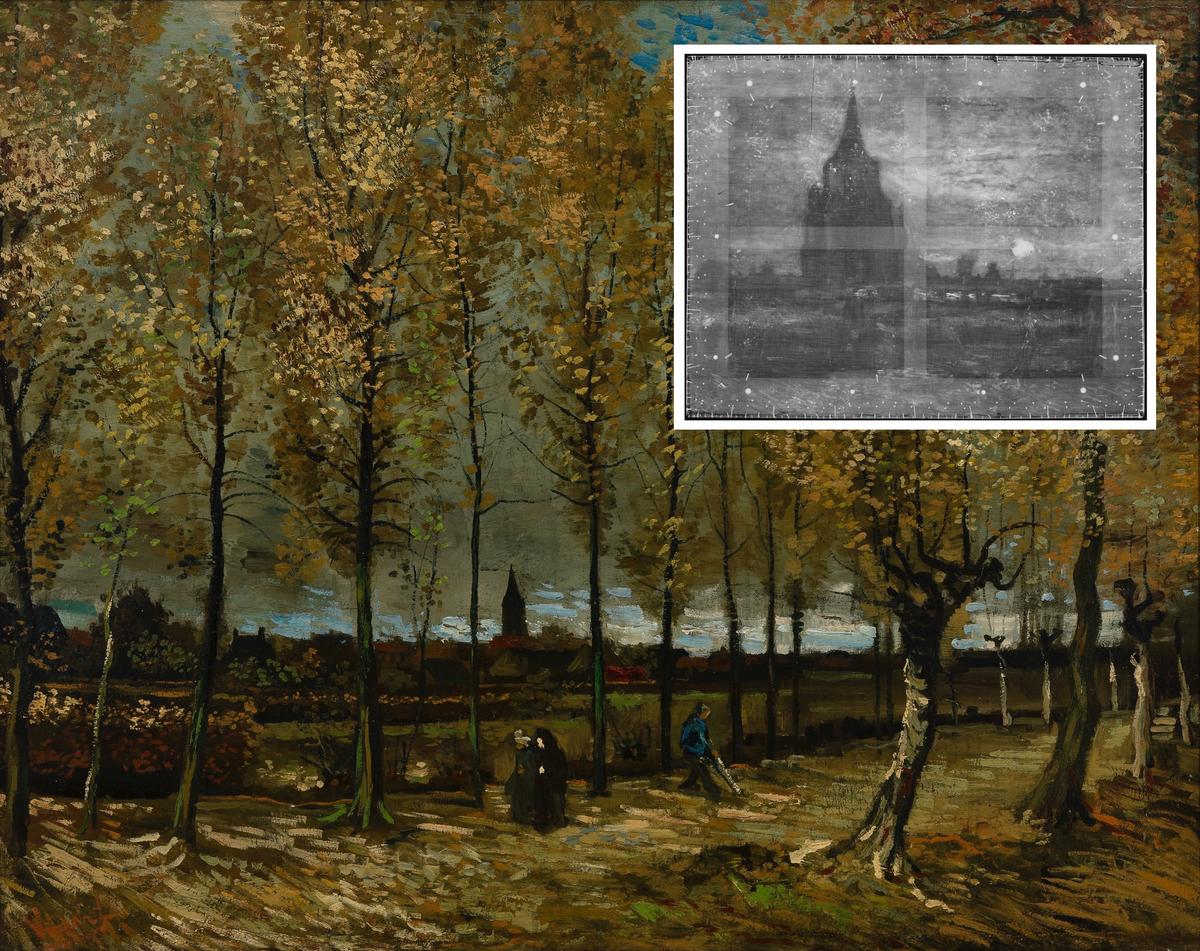Poplars near Nuenen, the first Van Gogh to be acquired by a Dutch museum, is to be restored. This will offer an unusual opportunity to investigate two intriguing questions surrounding this important landscape.
Why did Vincent reuse the canvas and paint over an earlier composition of Nuenen’s old church tower and the cemetery where where his father had been buried? And although most of the later landscape of poplars was completed in the Dutch village, did he retouch it a few months later in Paris, adding brighter colours after encountering the work of the Impressionists?
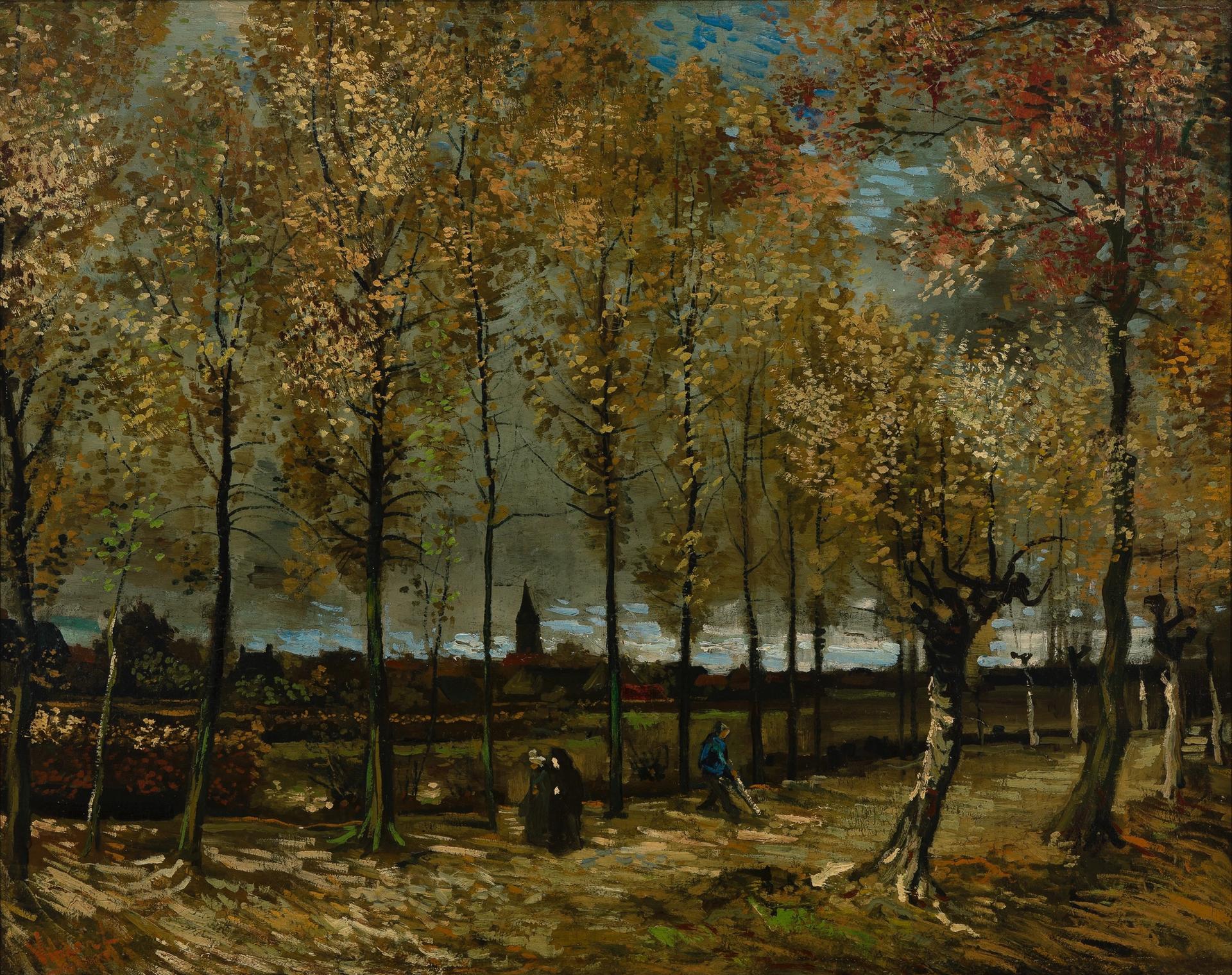
Van Gogh’s Poplars near Nuenen (November 1885 and possibly spring 1886) Credit: Museum Boijmans Van Beuningen, Rotterdam
Rotterdam’s Museum Boijmans Van Beuningen has just been awarded a €25,000 TEFAF Museum Restoration Fund award to study and conserve Poplars near Nuenen. This project should reveal much more about one of Van Gogh’s finest Dutch landscapes.
When Van Gogh planned Poplars near Nuenen in late October 1885 he conceived it as “a symphony in yellow”. It depicts an avenue of trees on the outskirts of the village where his family lived. Two women stroll along a track and a man seems to be sweeping up autumn leaves.
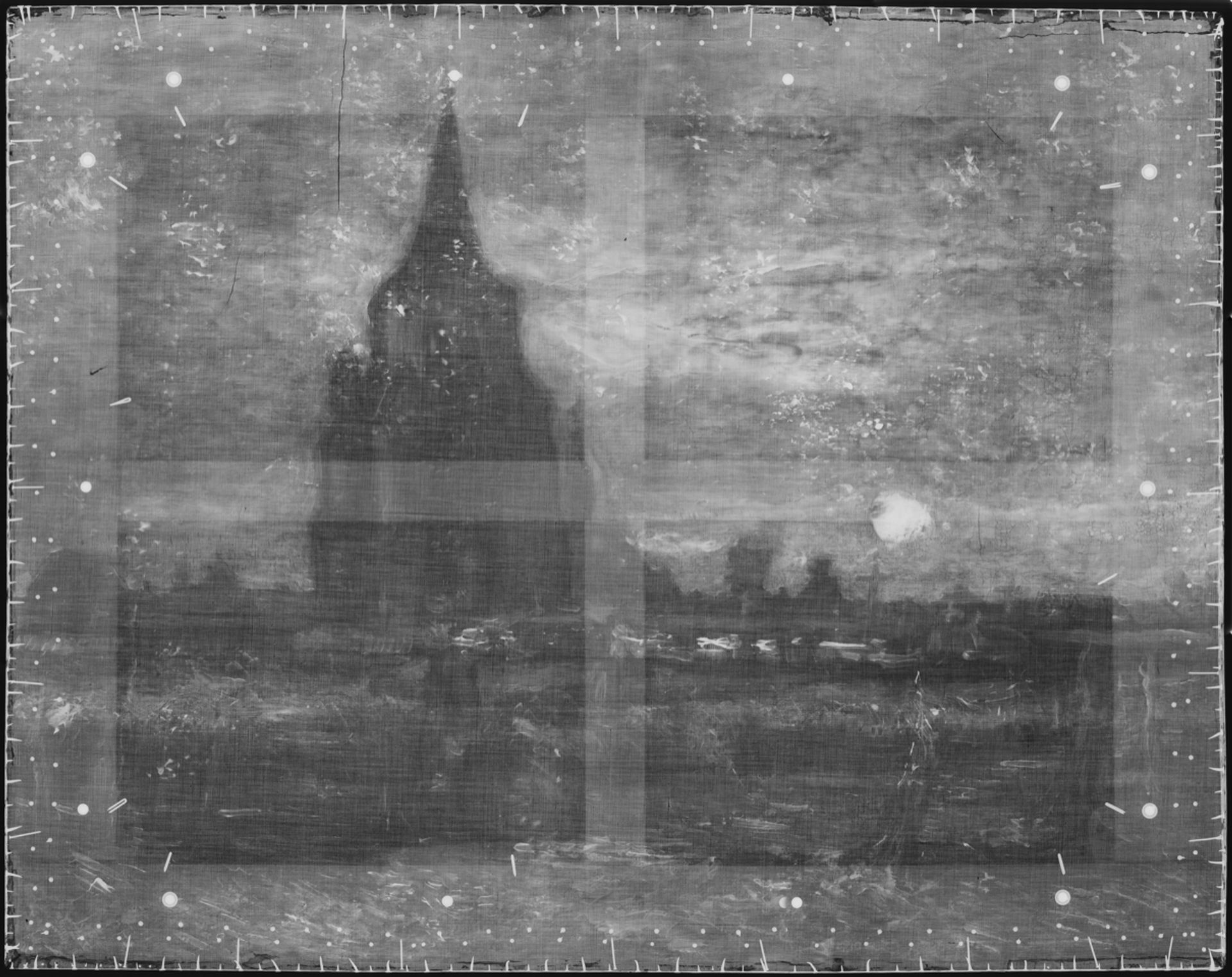
X-ray image of Poplars near Nuenen, showing an earlier composition of the old church tower and cemetery, which was overpainted Credit: Museum Boijmans Van Beuningen, Rotterdam
An X-ray image of Poplars near Nuenen reveals that beneath the composition Vincent had originally painted a close-up view of the tower of the old church, most likely in 1884. It included several crosses in the adjacent cemetery, where his father was to be buried after his sudden death in March 1885. It is curious that Vincent painted over this scene, just seven months after his father had died.
However, Vincent’s reasons may well have been purely pragmatic. He probably reused the canvas to save money, painting over the church and cemetery with the landscape of poplars.
While working on the final painting, Vincent made a small sketch of it for his brother Theo. In his accompanying letter, the artist described the composition as “an autumn landscape, trees with yellow leaves”. The church tower of the earlier composition reappears in the distance of the later landscape.
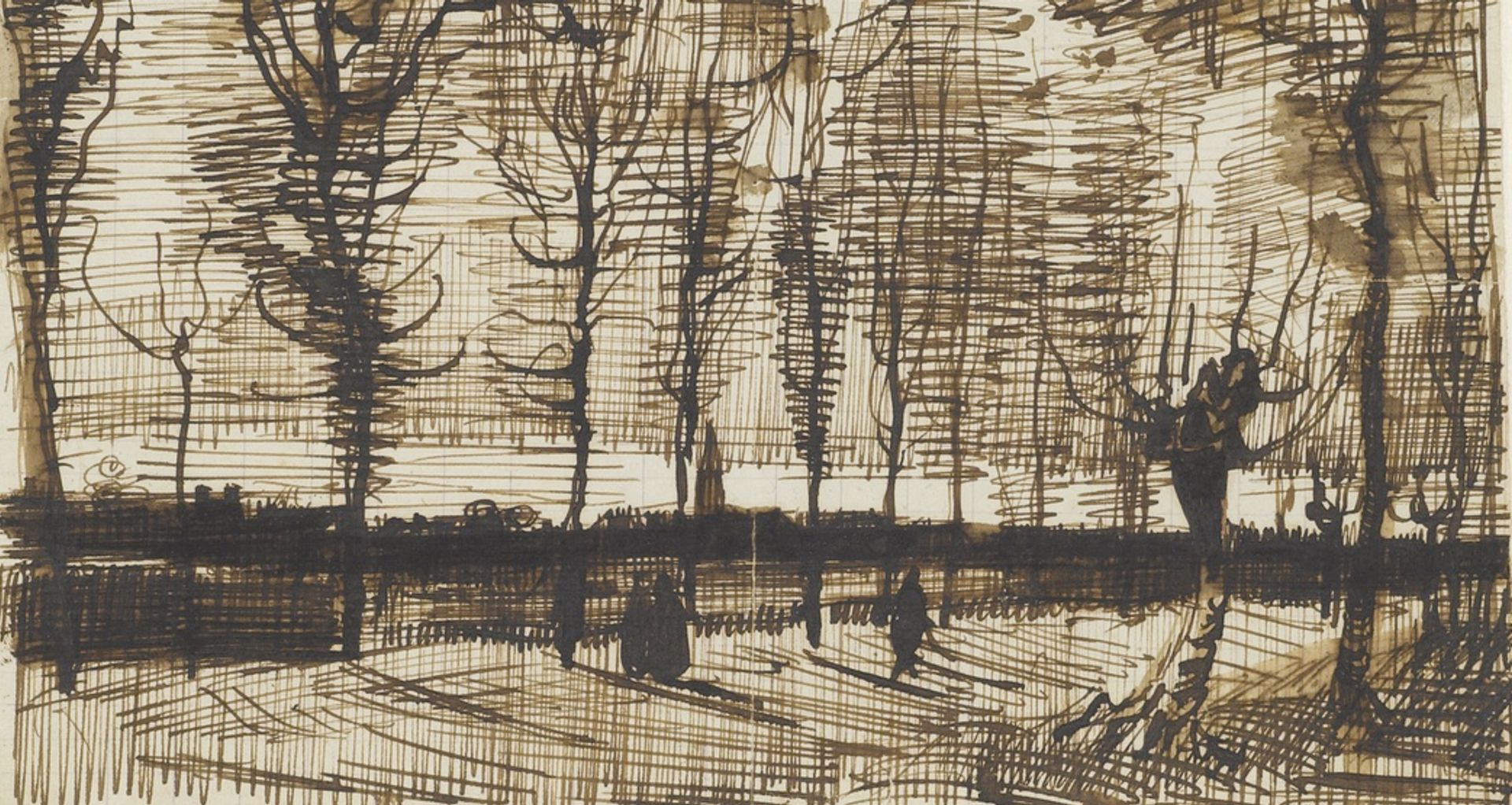
Van Gogh’s sketch of Poplars near Nuenen in his letter to Theo, around 17 November 1885 Credit: Van Gogh Museum, Amsterdam (Vincent van Gogh Foundation)
Three weeks after completing Poplars near Nuenen, Vincent left the Dutch town, after relations had deteriorated with his family. Wanting to develop his art, he moved to Antwerp, taking the painting with him. There he left the picture with a dealer, but it failed to sell and was quickly returned.
In February 1886, Vincent moved to Paris, to stay with his brother. It was there that Vincent discovered the work of the Impressionists, which had a profound impact on his own work. Abandoning the dark tones of his Dutch paintings, he experimented boldly with the use of colour. This ultimately led to Van Gogh becoming the colourist that we know and love.
After the deaths of Vincent and Theo in 1890 and 1891 Poplars near Nuenen passed to the artist’s sister-in-law Jo Bonger, who sold it in 1903 for the equivalent of £60. The picture was bought by “26 art friends”, who still remain anonymous, and they presented it to the Rotterdam museum.
Investigative work on Poplars near Nuenen has just begun in the Museum Boijmans Van Beuningen’s conservation studio, led by Erika Smeenk-Metz.
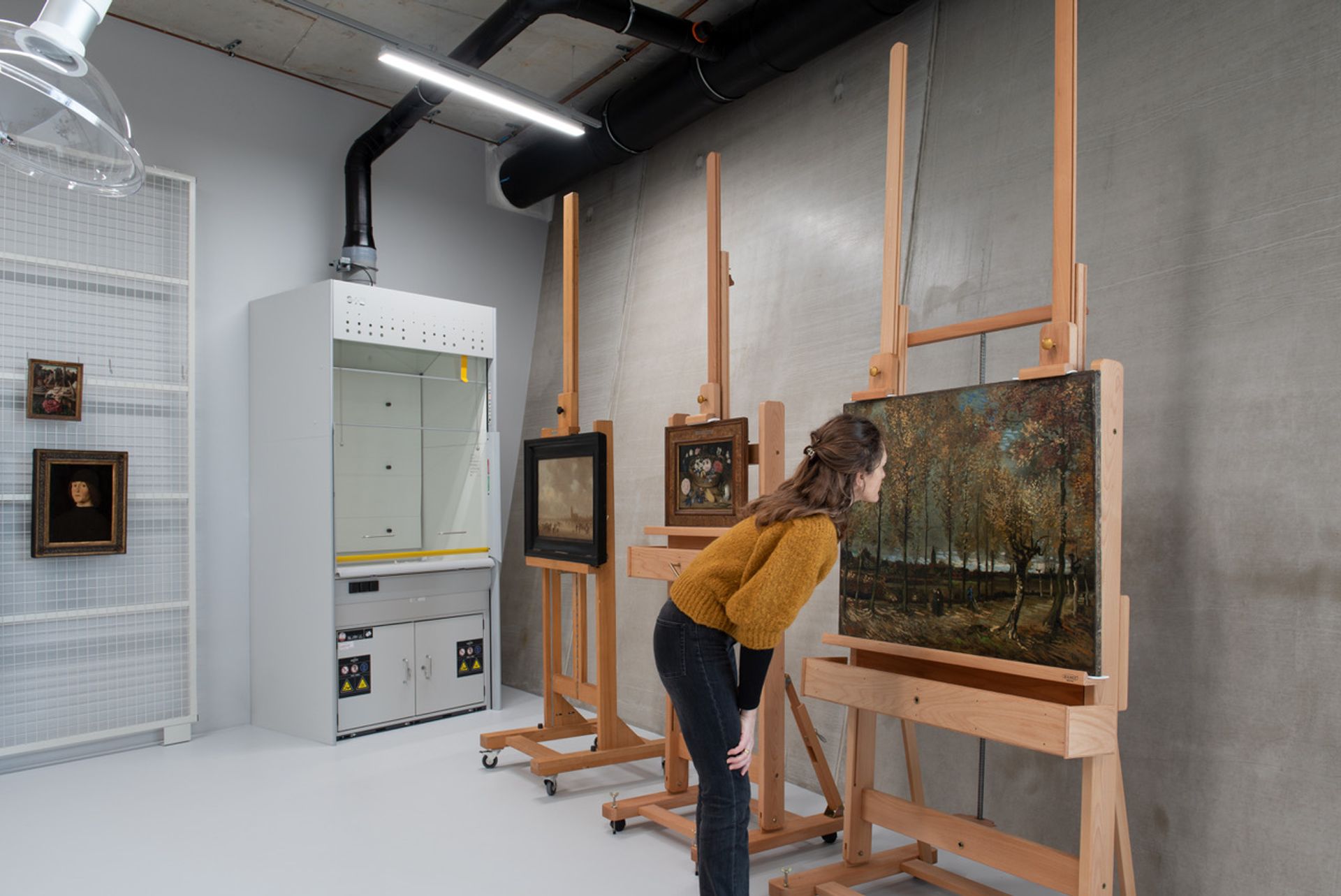
Van Gogh’s Poplars near Nuenen in the studio of the Museum Boijmans Van Beuningen, with conservator Erika Smeenk-Metz Credit: Museum Boijmans Van Beuningen, Rotterdam
The paint layer is very fragile, with a long-standing problem of lifting paint and numerous small losses, particularly along the pronounced cracks. Van Gogh did not allow the original image of the church to properly dry before he painted his second composition, which has resulted in cracking.
There are now conservation problems galore. The canvas was relined, probably in the mid-20th century, which created later difficulties, such as wrinkling. The old varnish has become very discoloured, with embedded dirt particles. In the upper left there is a 10cm vertical crack through both the paint and canvas (which is clearly visible on the x-ray).
Sandra Kisters, the museum’s head of collections and research, admits that if nothing is done “the risk of damage is very high”.
The main purpose of the treatment will be to stabilise the painting, ensuring its long-term preservation. This should also make it safer to lend to outside exhibitions. Removal of the discoloured varnish will hopefully mean that Van Gogh’s colours appear brighter and stronger.
Specialists believe that the blue paint strokes that stand out on the sky near the horizon and the light touches in the trees may well have been added after Van Gogh’s arrival in France. These additions bring the darkened composition to life. During the restoration it should be possible to determine whether these brighter touches of colour were indeed painted in Paris.
It may also be possible to determine if the painting was signed in Nuenen or Paris (it can just be made out, in red, in the lower left corner). The artist only occasionally added his signature “Vincent”, usually when he was really satisfied with a painting.
Before conservation work starts on Poplars near Nuenen it will be displayed at TEFAF in Maastricht, in the south of the Netherlands (25–30 June).
Conservation work is scheduled to begin a few months after that, probably involving the careful removal of old varnish. The restored painting is then likely to go back on display at the Rotterdam museum early next year.


